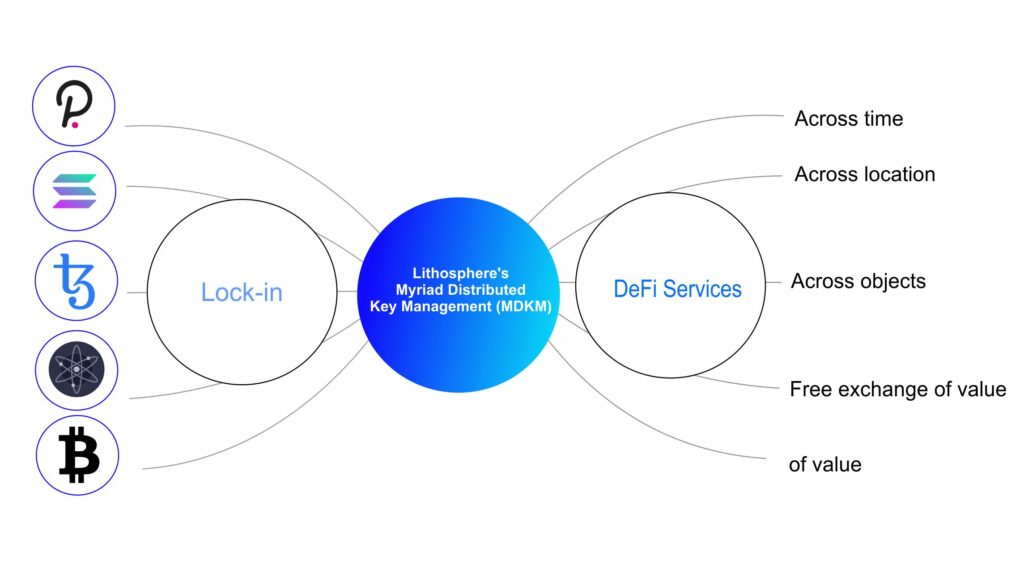Lithosphere drew a lot of interest and critics alike when announced last summer. Since then, the industry has evolved, the consensus now is that the blockchain space will, when fully developed, be multi-chain and interoperable. Web3 interoperability calls for a solid infrastructure to flourish. The demand for interoperability has paved the way for many projects to offer solutions, but trade-offs to users and developers have been inevitable.
The blockchain ecosystem is heterogeneous, with many chains and protocols. As a result, the whole ecosystem has inevitably become fragmented where liquidity is concentrated, and users cannot deploy capital efficiently. In this backdrop, interoperability could unlock tremendous opportunities via the broader adoption of blockchains and its sub-sectors like DeFi.
WEB 3.0 USER EXPERIENCE
Web3’s mainstream adoption has been delayed due to bad user experience. Across the board, crypto wallets and DeFi protocols’ UX is not up to par. Truly intuitive UX in the crypto space starts with the underlying infrastructure. Core infrastructure is what allows the user experience to improve. Scalability allows high throughput for fast-service interactions / transactions and low fees leading to mainstream Web 3 adoption.
At present, users need to know which blockchain network they’re interacting with. Users need to know exactly how to use the services and dApps on each network. There’s an endless amount of technical jargon and a general assumption and expectation that users will just know how to use existing services. This is a huge stumbling block to mainstream Web3 adoption. Cross-chain interoperability solutions like Lithosphere will be key 🔑 to accelerating crypto adoption.
CROSS-CHAIN LIQUIDITY
Bridging solutions today are either chain-specific, asset-specific, or app-specific. While they are effective short-term solutions to onboard users to L2s, the true potential of crypto networks is unlocked when liquidity is no longer fragmented, and applications can be cross-chain native from day one. Advancements in on-chain trading will improve decentralization and the efficiency for DeFi.
The long-term foundational layer for cross-chain transactions should be maximally extensible, and highly secure as economic throughput increases.
LITHOSPHERE’S MDKM TO THE RESCUE
Most cross-chain solutions that advertise interoperability are in fact using a compatibility model by forcing connecting blockchains to adhere to their parachain / central Hub to facilitate communication between diverse chains.
Other interoperability solutions have suggested using oracles and off-chain information relayers for cross-chain applications. The general assumption is that there are two roles: Relayer and Oracle, and they don’t collude. In this set up, the developer theoretically has the option of switching to another relayer or another oracle. If the developer builds their own relayer, then the user has to believe that the developer doesn’t collude with the oracle. This can be less credible than the native Relayer + Oracle setup. Additionally, this set up wouldn’t work for Bitcoin since it doesn’t support smart contracts.
The Lithosphere project aims to create ecosystems that facilitate trustless decentralized communication between different cross-chain transfers of any type of data or asset (not just tokens) without forcing any standards. To achieve this, one of Lithosphere’s novel innovations is the Myriad Distributed Key Management (MDKM) solution for mapping / bridging digital assets.
Myriad Distributed Key Management realizes the generation of public-private key pairs and addresses and the transaction signatures on the target blockchain in a distributed manner through several nodes and according to digital signature algorithms adopted by the target blockchain, thus realizing the control and management of accounts and assets on the target blockchain in a distributed manner.
Such a technical route enables MDKM to be compatible with as many digital assets controlled by encryption algorithms as possible, whether these digital assets are generated on a centralized or decentralized basis. By supporting a signature algorithm with MDKM, a series of encrypted digital assets with the same signature algorithm can be controlled and managed.
At present, most (over 80%) of encrypted digital currencies adopt the same ECDSA signature algorithm as Bitcoin and Ethereum, so MDKM first chooses to implement support for the ECDSA signature algorithm. In addition, MDKM will support digital assets that use different signature algorithms, such as Stellar’s Ed25519 signature algorithm [JL17], and Schnorr’s signature algorithm.
MISSION
Our goal is to offer MDKM as an interoperability solution for other L0, L1, L2, EVM, non-EVM chains. Today, MDKM powers Lithosphere but in the future, developers will be able to deploy it to other chains without having to interact with the Lithosphere protocol.
